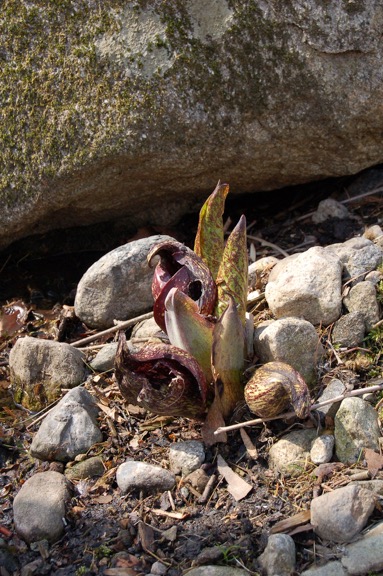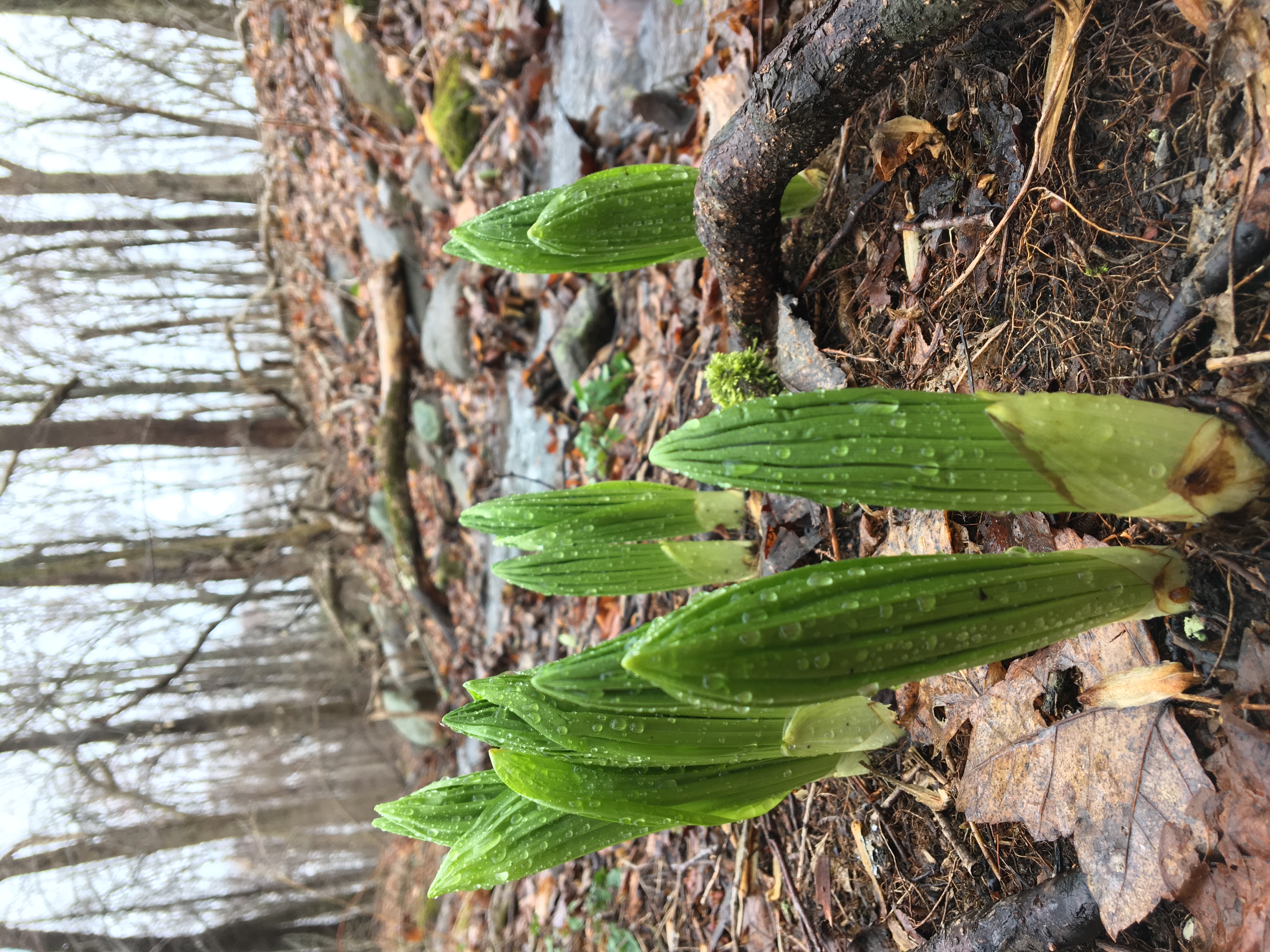[This post was originally contributed a few years ago by former NCLT board member Penny Ross. Her delightful description still hold true this spring season.Thank you, Penny!-Mike J.]
Daffodils are still weeks away, and snowdrops are only now starting to show in sunny spots, but New Canaanites lucky enough to live near a wetlands have a plant already blooming in their backyards—skunk cabbage!

Skunk cabbage heads up in early spring. Penelope Ross photo
True, the flower is well-hidden inside the plant’s speckled maroon-colored hood (spathe), but it’s a little oven of activity in the early spring. At the edge of a meandering stream, skunk cabbage’s pointed spathe can grow right through thin layers of ice, forming a circle of melt. This is an indication of skunk cabbage’s remarkable capacity to produce heat when flowering. On clear days when it’s around 50 degrees, you can see the first bees of the year going in and out of the spathe, carrying pale yellow pollen from flower to flower.
Biologists have found that skunk cabbage flowers produce warmth over a period of 12-14 days, remaining on average 36° F above the outside air’s temperature, day or night. They have the ability to regulate heat, as does a warm-blooded animal.
The flowers also release a noticeable odor at this time. On a calm day, coming down to the wetland you can detect a lightly pungent, somewhat skunk-like scent. If you put your nose to the opening of a spathe, the smell is much stronger. But unlike the potent defense assured by the striped mammal’s odoriferous spray, the skunk cabbage uses its distinctive aroma to allure. Small flies and other insects that are attracted to carrion—decomposing flesh—are drawn to the flowers.
As spring progresses, bright green spiraling leaves begin to unfold. If you crush a leaf, you’ll sniff a strong skunky odor. Skunk cabbage will stay in leaf until mid-summer, often growing near the pleated-leaf false hellebore, with which it can be confused.

Skunk cabbage, the second stage. Mike Johnson photo
Skunk cabbage is a familiar sight in our Browne Sanctuary off Valley Road, where the maintained trail traverses a swampy area on a wooden walkway.
Recent Comments